A stock is a liquid that is obtained from simmering various ingredients in a sufuria to extract their flavor, and the resultant liquid used as an ingredient to another recipe. These stocks can be added to soups, casseroles and even pilau instead of just using water and you can make plenty and store for the weeks to come. Vegetable stock is obtained by simmering down vegetables of your choice. Fish stock and beef stock may take several hours to prepare and one uses their respective bones to get their stocks.
You can purchase these in supermarkets, but in my country Kenya, it is very rare to come across them. This gives us the perfect chance to make our own. The best part about making your own stock is that you can adjust the component ingredients to fit your taste and you know exactly what is in it, so no preservatives or chemicals. Plus, it is so easy to make, and I will show you how.
Ingredients:
1 onion
Corriander Stalks
1 Bell Pepper
2 Carrots
2 cloves of garlic
Optional Extras: ( Bay Leaves, Fresh thyme or Rosemary, Mushroom Stems, Tomatoes, celery)
Method
Roughly cut all your ingredients and place them in a sufuria.
Tip: When you have a vegetable that is about to go bad but is not quite there yet, you can turn it into a stock. For example, the carrots I used were soft and if left longer, would have gotten spoilt and thrown. To avoid that waste, I used them in this stock. Also, you can use vegetable parts that would have otherwise been waste despite them having just as much nutrients e.g carrot skins, bell pepper cores, parsley and coriander stalks e.t.c. Amazing how we can reduce wasted food by transforming it into another component ingredient!
Then, add some cold water to the sufuria and allow the water and everything that is in it to come to a boil. Once you start seeing some bubbling around the edges of the sufuria and a few whisps of steam, turn the heat down to medium low and allow this to simmer for about 30-45 min.
Ensure you have enough water i the sufuria to last through out that period.
After the time has elapsed, remove them from the heat, strain your liquid, allow it to cool them store it for future use.
Additional Tips:
* You can add more flavor to your broth by roasting your vegetables first, then, while they are still warm, put them in a plastic bag where they soften and release their liquids, a process known as sweating. This makes the layers of flavors more complex. (I wish I did this while preparing my stock)
* Do not add salt to the stock. This is because it shall be used, say in a soup or sauce, which may also contain salt. Over salted food makes any food unappetizing and we do’t want that.
*Always start with cold water. Different flavor components have different levels of solubility in water at different temperatures. By starting cold and slowly increasing the heat, you can be sure that all the have had a chance to be extracted at their preferred temperature.
*Lastly, experiment with various ingredients until you land on the vegetable stock that suits your taste best.
Keep it Kaluhi’s Kitchen.
XX
All content and images are copyright protected by 
Do not copy in part or whole without giving due credit.
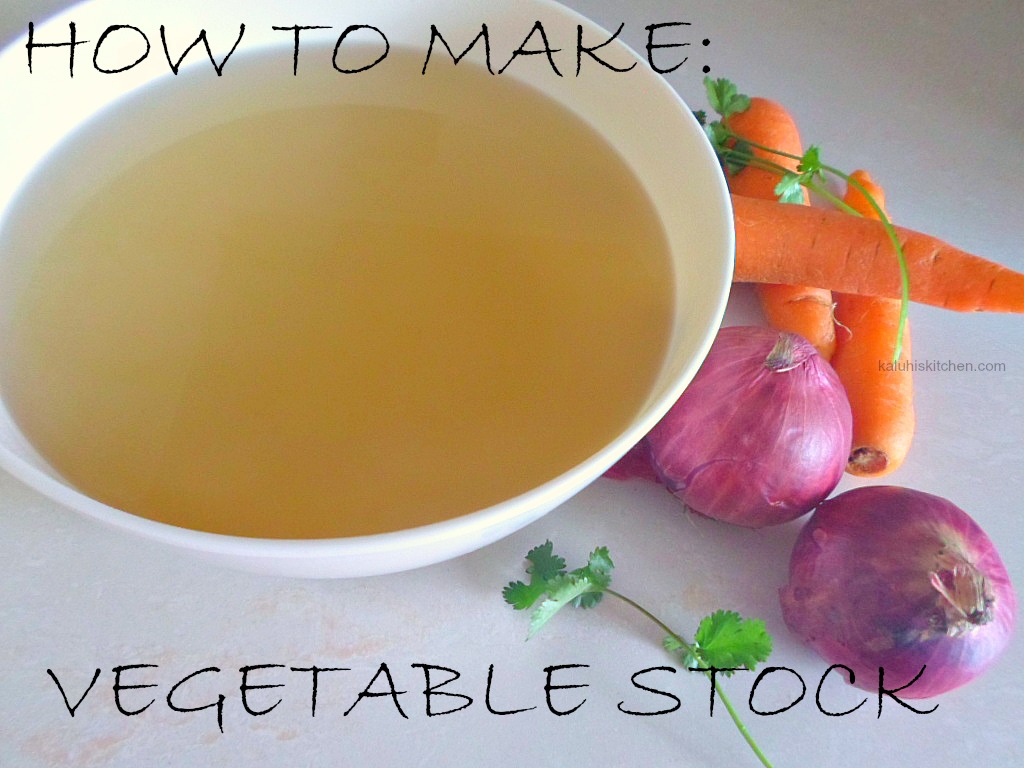
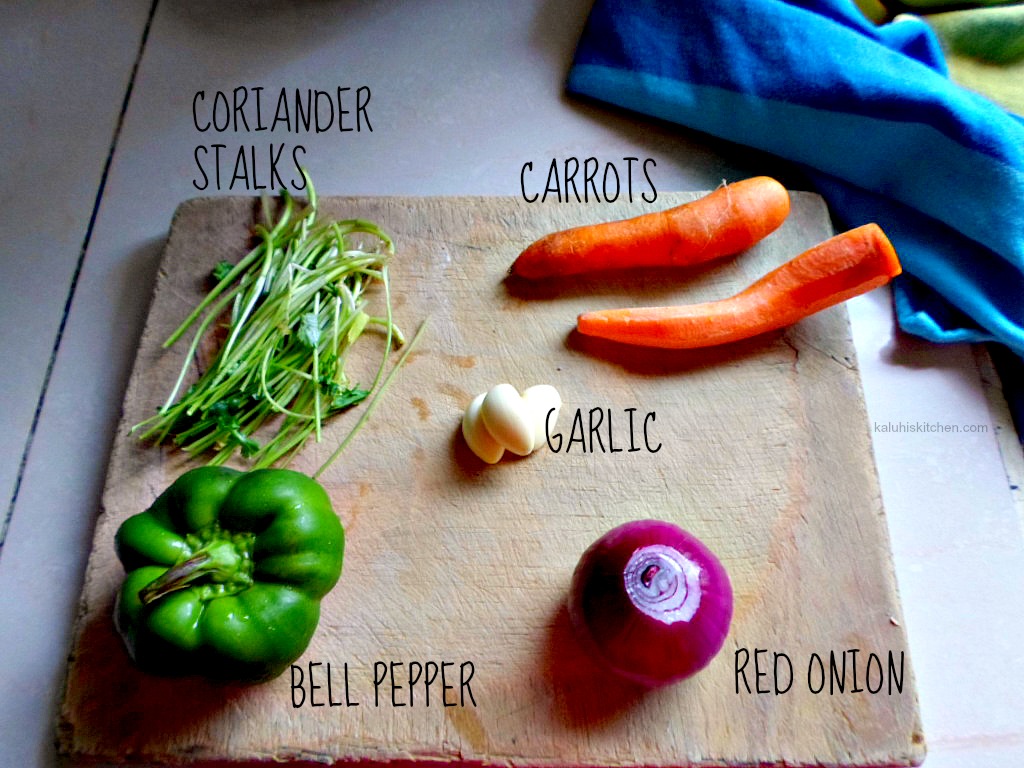
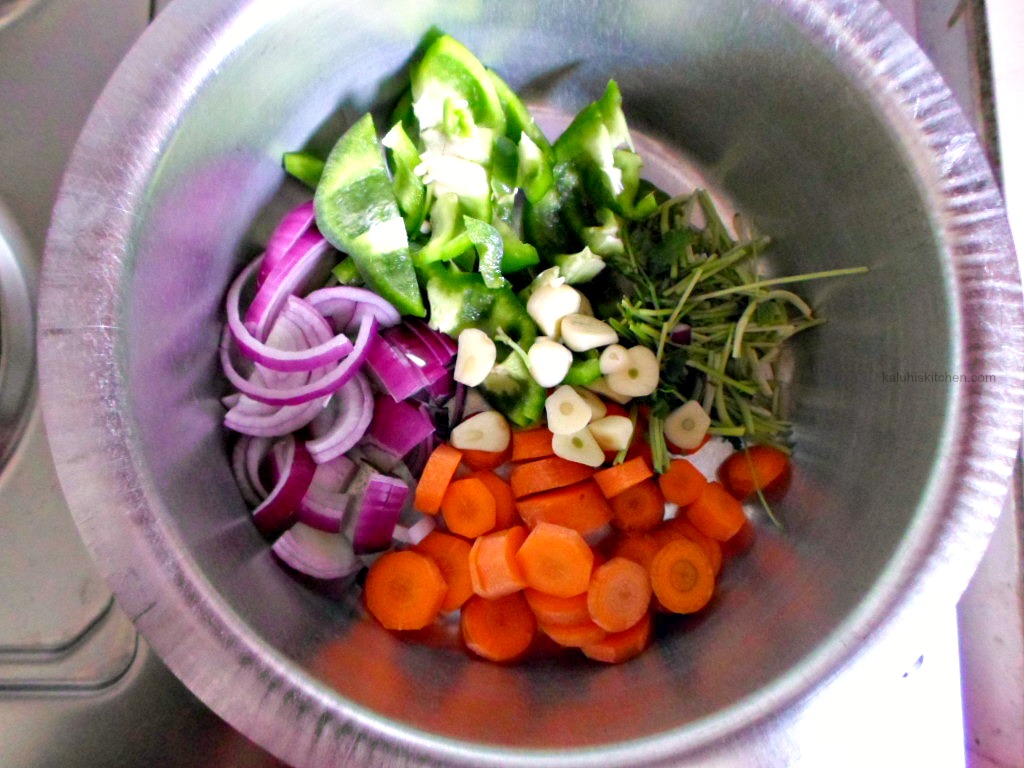
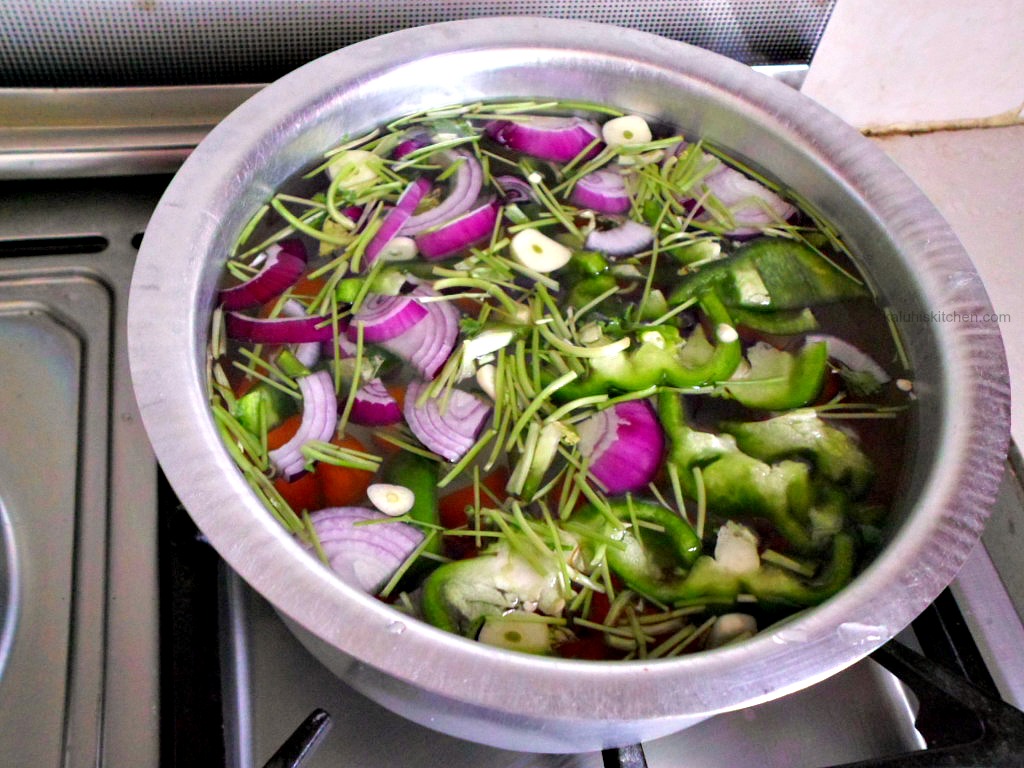
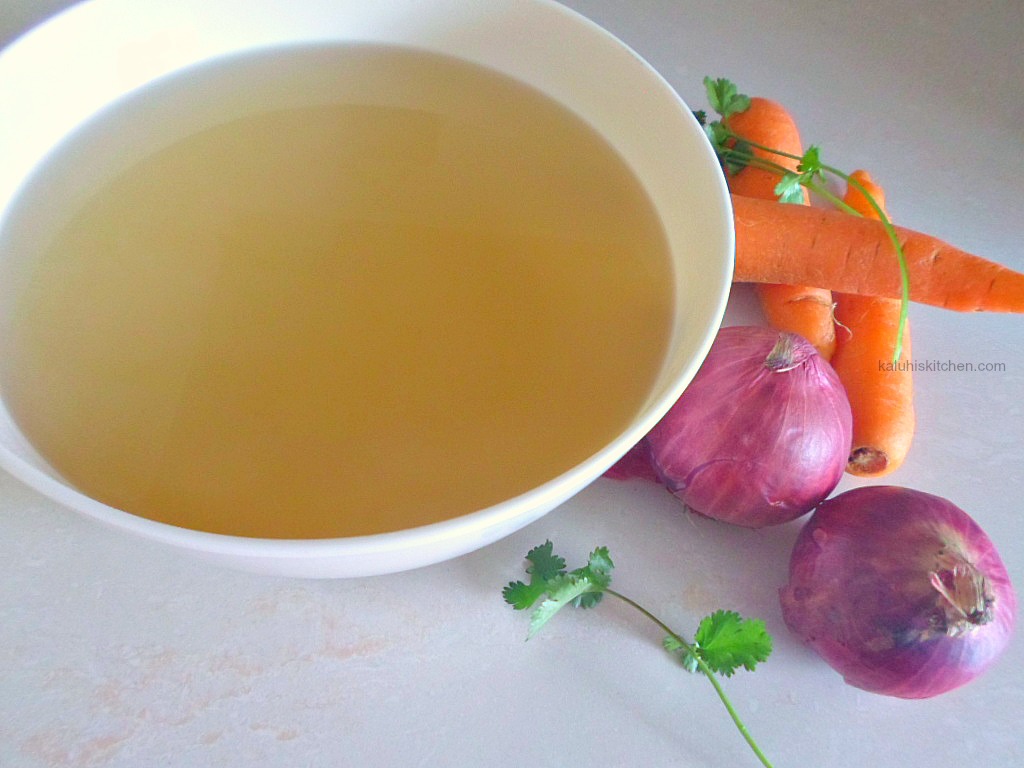
 Hey there! My name is Kaluhi and I love food! Through my blog, I am happy to share with you my self-taught recipes, steeped in nostalgia and the happiest of memories. I hope each recipe you try out is as addictive as the previous one and is shared on a table full of love and hearty laughs!
Hey there! My name is Kaluhi and I love food! Through my blog, I am happy to share with you my self-taught recipes, steeped in nostalgia and the happiest of memories. I hope each recipe you try out is as addictive as the previous one and is shared on a table full of love and hearty laughs!




Wow! Been wondering how to make my own, thanks
You’re most welcome Carole! Home made is always best!